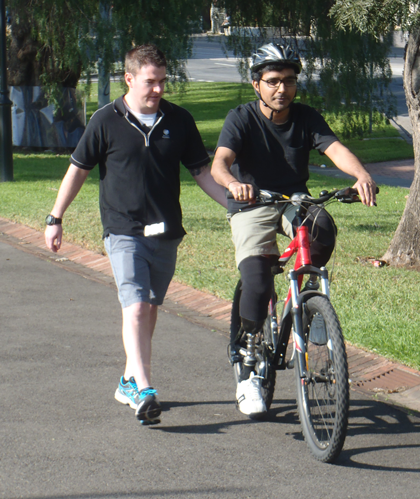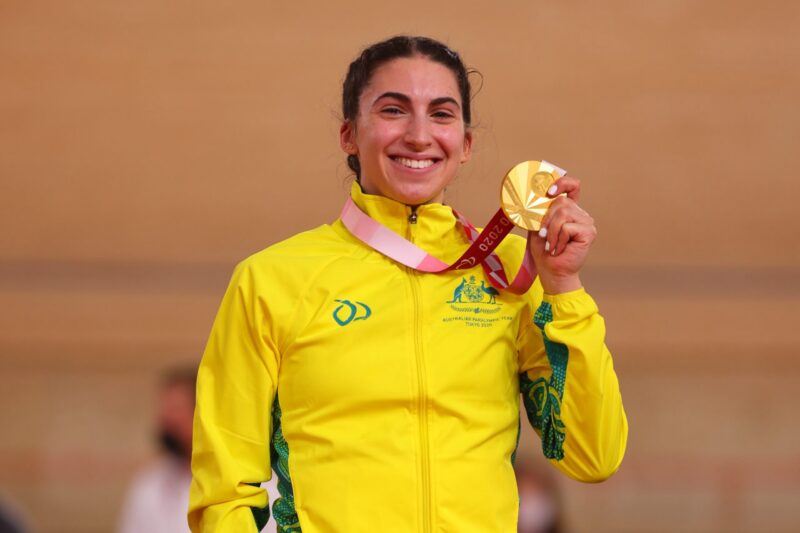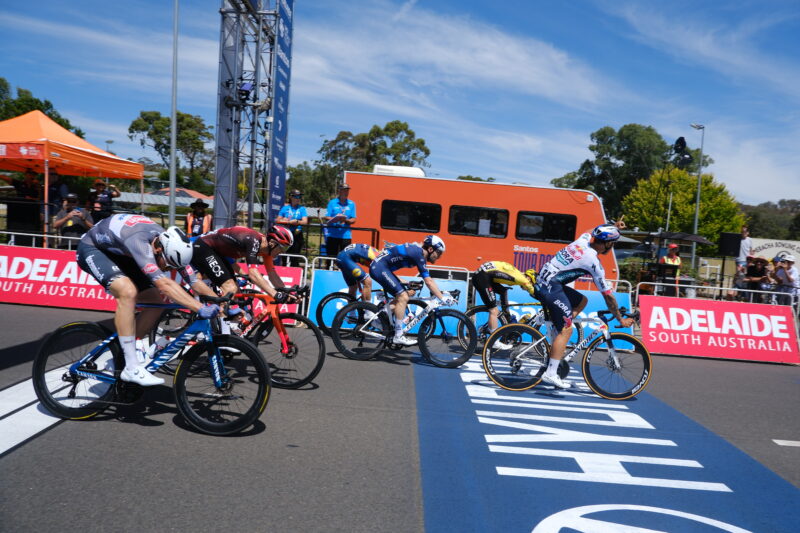Back on the bike

After a life changing injury there can be many roads to recovery, and pedalling a bike can be one important part. Senior Exercise Physiologist Chris Byrne explains.
The Epworth Hospital’s Cycle Retraining started 20 years ago – the brainchild of sports physiologists including Chris Byrne who realised people suffering from traumatic injuries wanted to get back on the bike.
The program offers riding education and rehabilitation to people who have suffered traumatic brain injuries like Ben and orthopaedic injuries. More recently, the program was offered to people who have had limbs amputated.
Ben’s Story
It was an early morning in February 2013 when 21-year-old Ben was driving to trade school from his home in Gisborne on the outskirts of Melbourne.
Ben was training as an apprentice electrician and the trip was one he’d taken many times before. But this day, as he made his way to school, Ben’s car left the road, colliding with a tree.
Epworth Hospital’s Senior Exercise Physiologist Chris Byrne says Ben sustained life threatening injuries – including a brain injury.
“The crash left him without the ability to walk or talk. He couldn’t remember simple things,” Byrne, explains.
It was something his medical team called a “significant impairment”.
Byrne says he met Ben after he underwent a ninemonth stint in hospital, undergoing extensive, daily rehabilitation – taking on exercises to retrain himself to speak, remember information and walk.
Byrne says Ben had moved back to regional Victoria to live with his parents – but continued his therapy sessions in Melbourne every week.
A recreational bike rider before the crash, Ben mentioned during one of his many therapy sessions that he wanted to ride again, to feel the freedom he did before his crash, and to have the independence to travel that he once had.
So he was introduced to the team at Epworth Hospital’s Cycling Retraining Program to get back on the bike.
“Ben knew he had to wait until he could learn to drive again, so he wanted to use his bike as transport to ride to the local gym for therapy and hydro pool sessions, and get back to footy training to reconnect with his mates and his community,” Mr Byrne explains.
It started Ben’s journey to get back on the bike – and to the life he had before the crash. Through his dogged determination, family, friends’ and community support he’s back to being a regular rider and making the journey to the gym and footy training.
“Though he’s unable to play footy, he does help out with other important things around the club,” Byrne says.
He’s also making his way back to full time work. A local business offered him work two days a week (in the electrical trades where he started out) – and he rides his bike along the bike paths between his home and the shop each day. Riding a bike has helped Ben, not just regain some of the independence he lost after the crash, but also with the social connections that are really important part of recovery.

Since it began in the mid-1990s, more than 200 patients have been through the retraining program and are riding again – with the main age range of participants from their late teens to mid-40s.
Some are cyclists who have been involved in crashes, some like Ben, are recreational riders wanting to get back on the bike after major trauma to their bodies.
It also offers training to therapists and physiologists across the country, allowing more patients to have access to the Cycle Retraining Program.
Each participant is assessed by a medical team and also assessed for riding ability. They’re provided with training on a onetoone basis, ensuring close supervision and assistance is always available.
The training is comprised of three core components:
1) Closed skill, which includes riding balance, cornering, braking and bike control skills;
2) Open skill, where the rider is introduced to cycle path and shared space riding are the focus, and,
3) On road cycling, where in traffic riding, riding safety, visibility and intersection negotiation are addressed.
As a large number of the program’s participants have sustained their injuries while cycling so returning to on road cycling can be a very daunting and emotional task.
The program allows a person to develop their riding skills and confidence at their own pace in a supported environment. There is no pressure to succeed and no time limits are set to learn new riding skills – the riders are gradually exposed to new environments and skills to instil riding confidence.
For some riders, just being able to ride alongside their children on a cycle path or ride to the local shops will be a major milestone. Others have been known to set more lofty goals, such as aiming to conquer events like Around the Bay on a modified recumbent. Accordingly, each person’s circumstances, abilities and goals are taken into consideration when the individualized training program is devised.
*The program works collaboratively with a company called Cycle Science – which helps to modify bikes depending on patient needs.
Epworth Rehabilitation accepts referrals for individuals who are interested in returning to cycling following major injury. For more information email Chris Byrne ([email protected]) or Adrian Sexton ([email protected]).
Ride On content is editorially independent, but is supported financially by members of Bicycle Network. If you enjoy our articles and want to support the future publication of high-quality content, please consider helping out by becoming a member.







